I love time travel stories. They are my favourite type of science fiction. But even in a world with Back to the Future and Star Trek IV, I’d still say the most interesting, complex and utterly captivating time travel narrative I have ever encountered is the visual novel Steins;Gate.
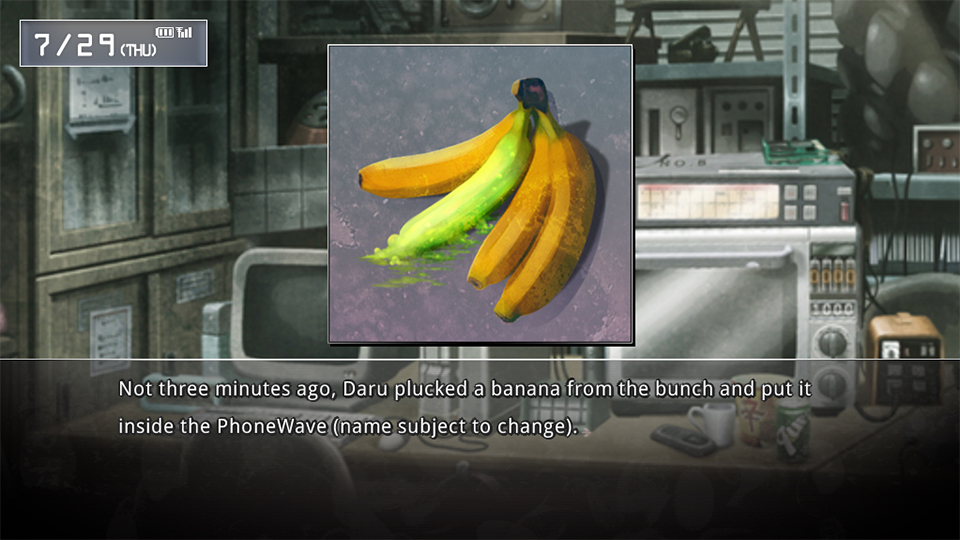
Steins;Gate is the story of Rintarou Okabe, self-styled mad scientist (read: college student) who accidentally invents time travel in the two-room apartment he calls his lab. However, the time machine does not send a person through time, but instead a small, short email.
Much of the first act deals with figuring out the rules of time travel — i.e., what the ability to send emails into the past can really affect and the unintended consequences of even the simplest of messages.
Over the course of the game, two other forms of time travel are introduced: a Quantum Leap-type machine that allows you to transfer your memories into your past body and a true time machine that can take you physically into the past. However, each of these types of time travel have their own unique rules which limit their usefulness — as does the multiverse itself.
The complex world it builds is where Steins;Gate really shines. Time travel stories often fall apart due to contradictions in how their time travel works — where rules are established and then later broken for no other reason than that the plot wills it. Despite being rather complex, the time travel mechanics hold together quite well and serve not only as the catalyst for the plot, but also its resolution.
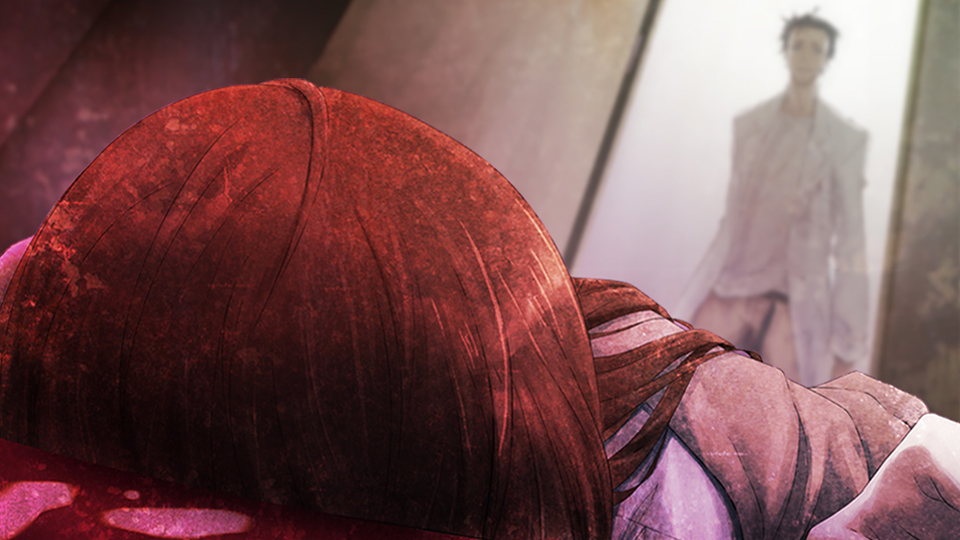
But when it comes down to it, time travel is just the window dressing of Steins;Gate. On the most basic level, Steins;Gate is the story of one man versus fate itself. In the world of Steins;Gate possible parallel universes are gathered in clusters which diverge and converge at set points. As the convergence points are identical for every reality in the cluster, key events — like, for example, people’s deaths — must occur in all possible realities in that cluster.
Thus, to change fate, save the future and protect the people he loves, Okabe must not just change from one timeline to another, he must bring all of time itself onto another cluster of possible realities — a goal that is next to impossible.
While Okabe is undeniably the protagonist — and a uniquely awesome character in his own right — he is often overshadowed by the game’s supporting cast.
There is Kurisu, a genius scientist who serves as Okabe’s logical foil; Mayuri, Okabe’s childhood best friend who is either a complete ditz or autistic; Daru, an overweight hardcore otaku and world-class hacker; Faris, the teenage owner of a maid cafe who acts even more playfully insane than Okabe; Luka, an androgynous boy with gender identity issues; Moeka, a shy girl who can only seemingly talk through text messages, and Suzuha, a girl with an odd way of speaking who fancies herself a warrior.
On the surface, these characters are all enjoyable and interesting. But as Okabe interacts with each, you learn that everyone is far more than they appear on the surface and getting to know each one is one of the joys of the game.
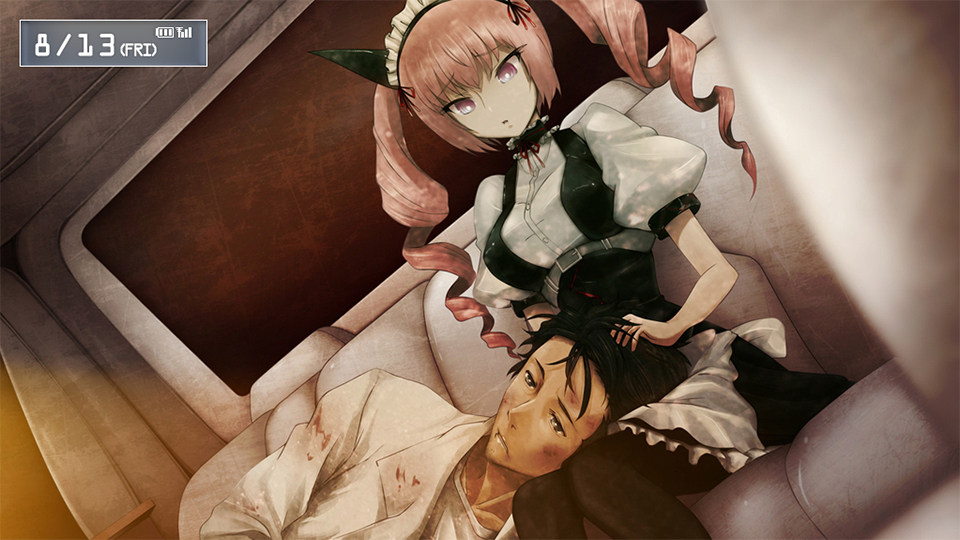
However, despite its often fun conversations and excellent character interactions, once it hits its stride, Steins;Gate is not a happy story. Rather it is often a torturous one. While Okabe’s goal — to avert a distopia and save the life of his closest friend — is noble, the sacrifices he must make along the way are soul shattering. Sometimes, he must put himself through emotional torture — like as he watches his friend get killed over and over again in countless horrible ways. Other times, he must steal the happiness from those he cares about most — destroying their dreams for the sake of his own, not to mention the world’s.
This is the reason for the game’s several drastically different endings. How many horrible things can you do to the characters you have come to care about over the course of the game before you just have to say enough is enough?
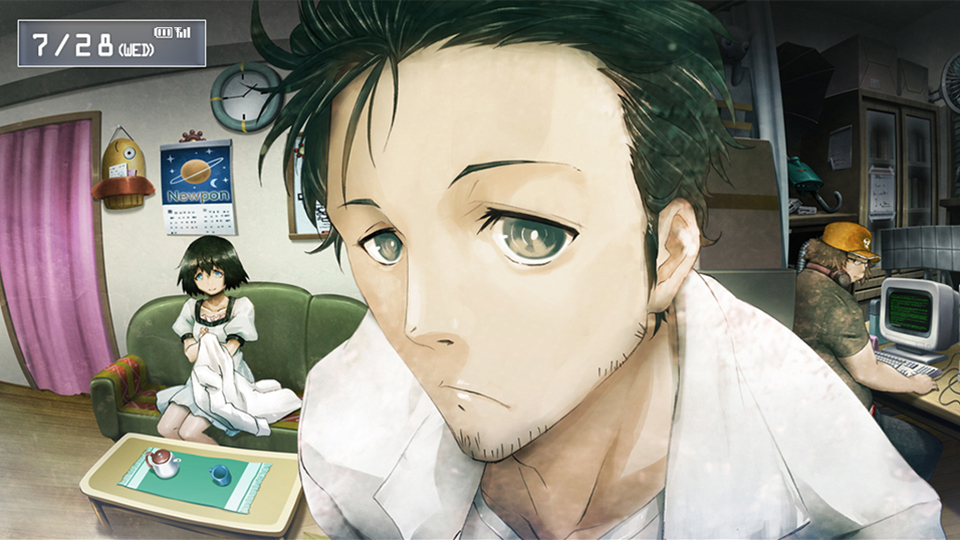
While the anime and game’s plot are largely identical (with the game being a more detailed telling), there is one major difference: hearing Okabe’s thoughts. In the anime, we are left with only Okabe’s outward reactions — which are often so strange as to seem schizophrenic.
In the game, on the other hand, we are able to see his self-awareness develop as the situation grows worse and worse. Basically we see him grow and develop as a person through his experiences. Of course, the ability to see the thoughts inside his head also makes every choice he is forced to make all the more torturous as we can see the agony he is struggling to hold inside.
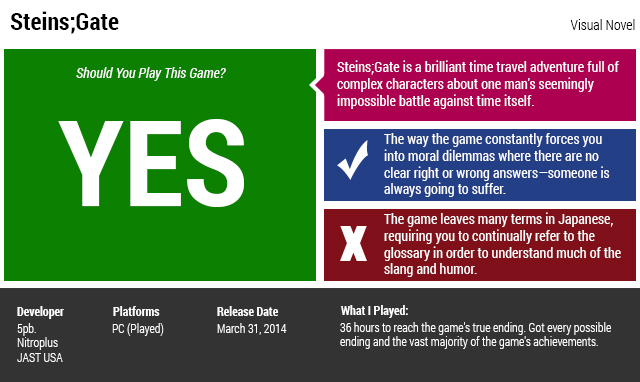
The entirety of the gameplay in Steins;Gate is based around Okabe’s cell phone. Throughout the visual novel, there are points in the game where you have the option to time travel — activating one of the time machines by using your phone. Sometimes, these choices do little more than add another scene. Other times, they change the game’s entire ending.
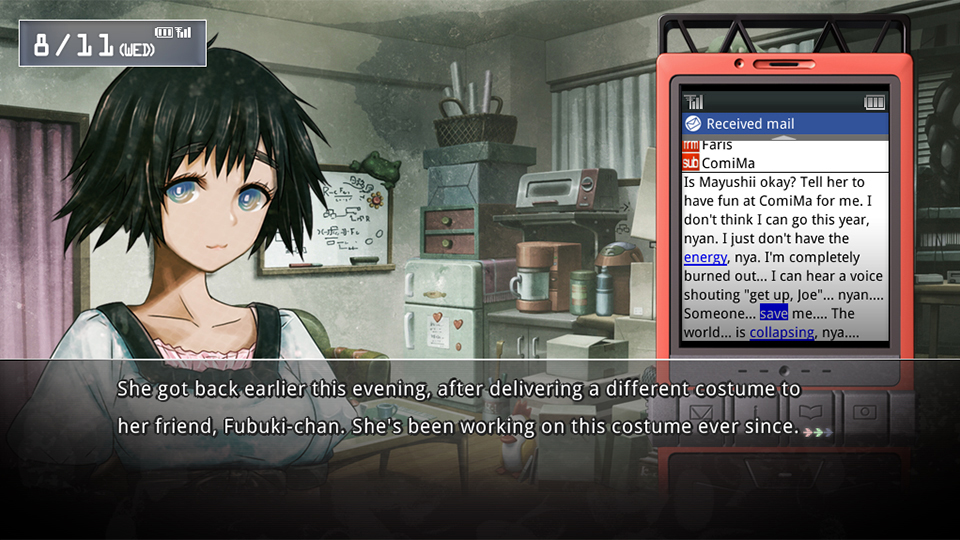
But this is only the most obvious way the phone affects how the game unfolds. As you play, you will regularly receive text messages from the other characters. Often, these texts will have several highlighted words. If you click on one of these, Okabe will write a response corresponding to that aspect of the text.
Some of these responses do nothing of any import. Others help develop the supporting cast in surprising or silly ways. Sometimes, these texts will add an extra scene or two to the game as the characters feel closer to Okabe. But while these texts often seem harmless fun, they, like the more overt time-travel choices, can dramatically change the ending.
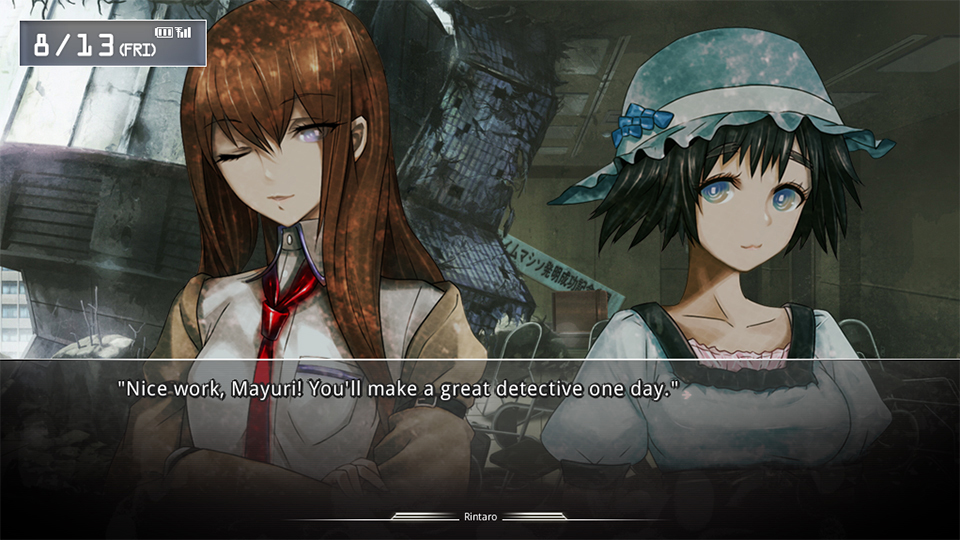
Unfortunately, there is no easy way to tell which of the several responses in the myriad of emails is vital and which is not. Moreover, for some important scenes, it is necessary to ignore some of the emails and/or not answer characters’ calls. Because of all this, to experience all the game has to offer, you’ll have to use a walkthrough — and even then it can get a bit confusing.
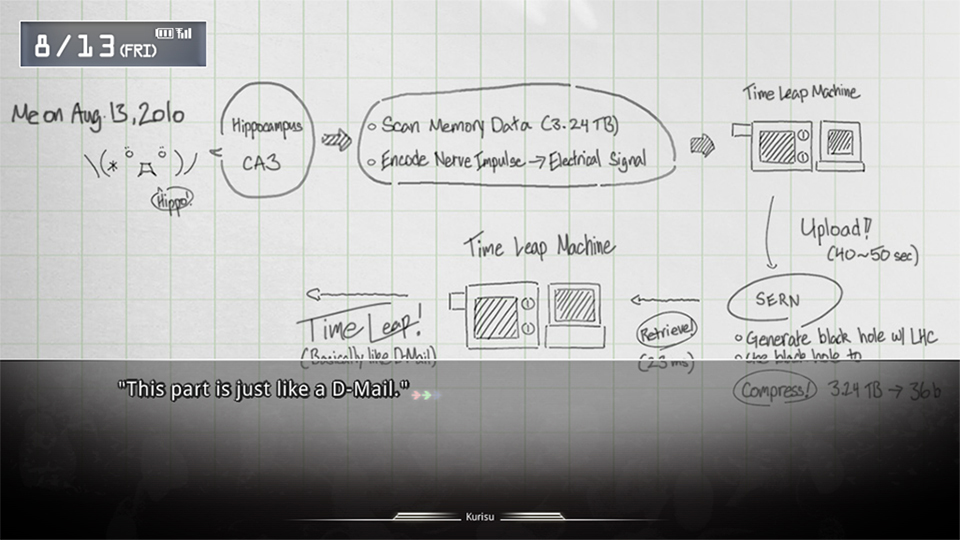
The game’s other problematic area is in the “science” part of “science fiction.” There is a lot of interesting science in Steins;Gate — dealing with everything from the LHC to real theoretical methods of time travel.
However, even as the game tries to dumb down these concepts, it often feels like technobabble. Then, when the sci-fi explanations of how the various time machines work are fed into the mix, it is hard to tell which is scientific fact and which is misinforming fiction.
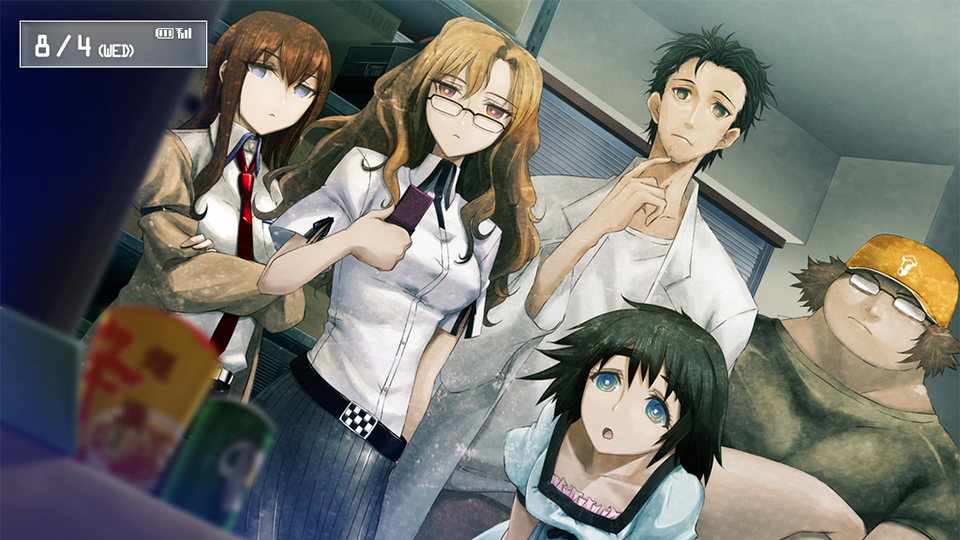
In the end, Steins;Gate is simply a fantastic visual novel. It has great characters which you can’t help but come to care about and a complex and interesting time travel system which draws you in and never lets go. Add to these elements a plot that is equal parts tense and heartwarming and you have a modern classic. If you call yourself a sci-fi or time travel fan, you must play Steins;Gate.
Steins;Gate was released on 31 March 2014 for Windows operating systems.
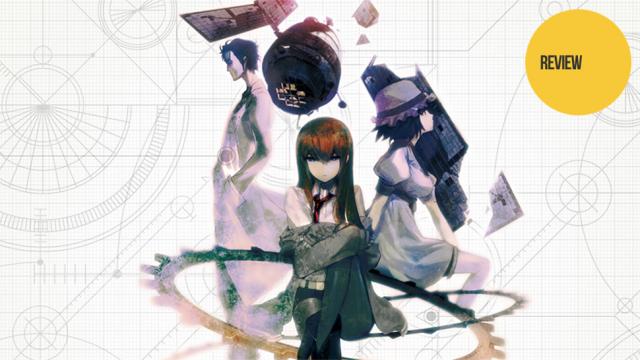
Comments
4 responses to “Steins;Gate: The Kotaku Review”
Hopefully they port this so I can play it on my IBM 5100 😉
I loved the anime, and the game is just as good (if not better). Steins;Gate is one of the best visual novels on the market imo, and it’s great to see it finally available for English speaking people.
Where can I get it?
Not where, when. It was available for a short window in the past so you need to d-mail yourself and make sure you pick it up.
I purchased it from http://www.jbox.com/product/SG001LE
They also provide a download link so you can play while waiting for the hard copy to arrive.